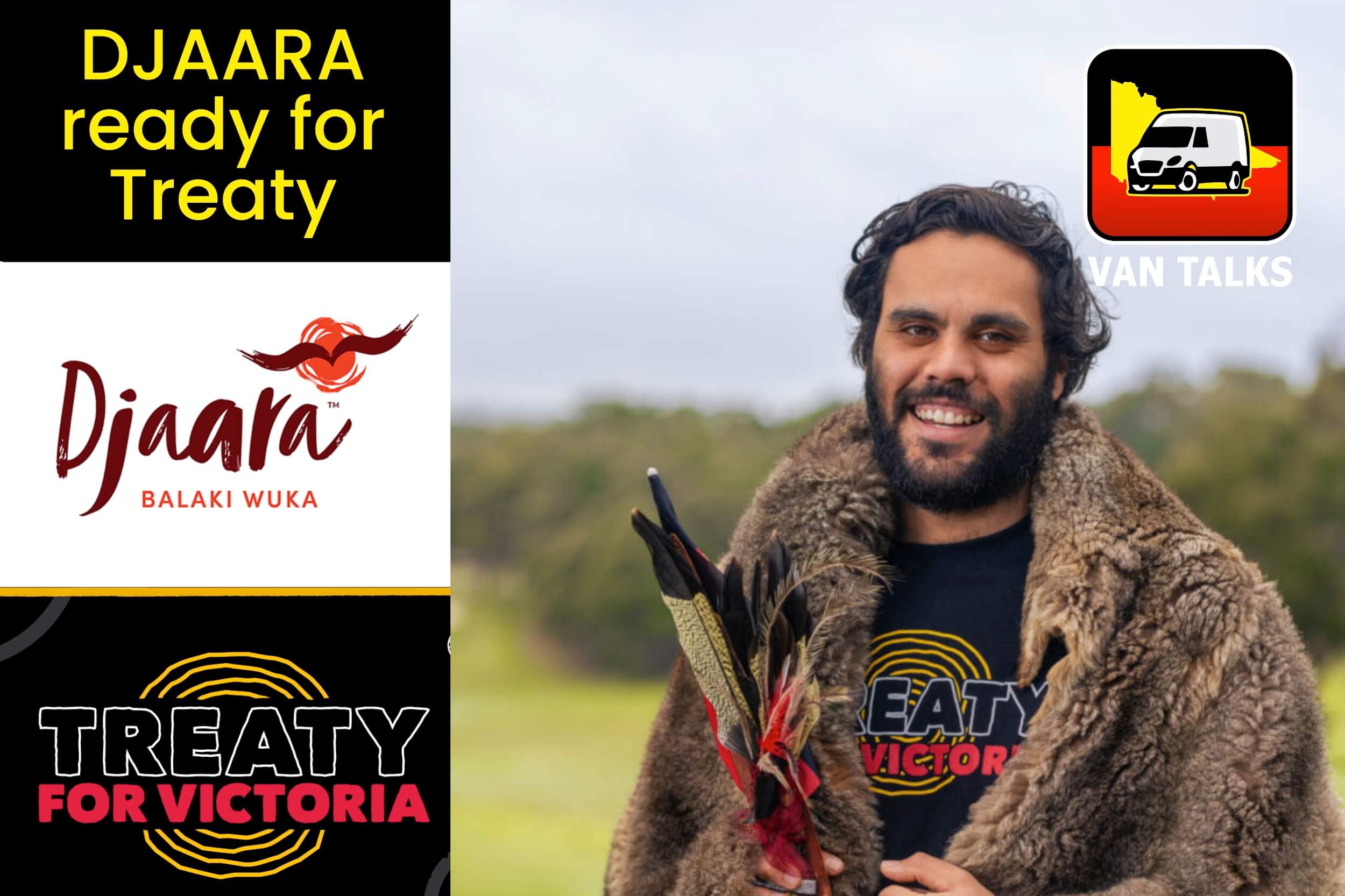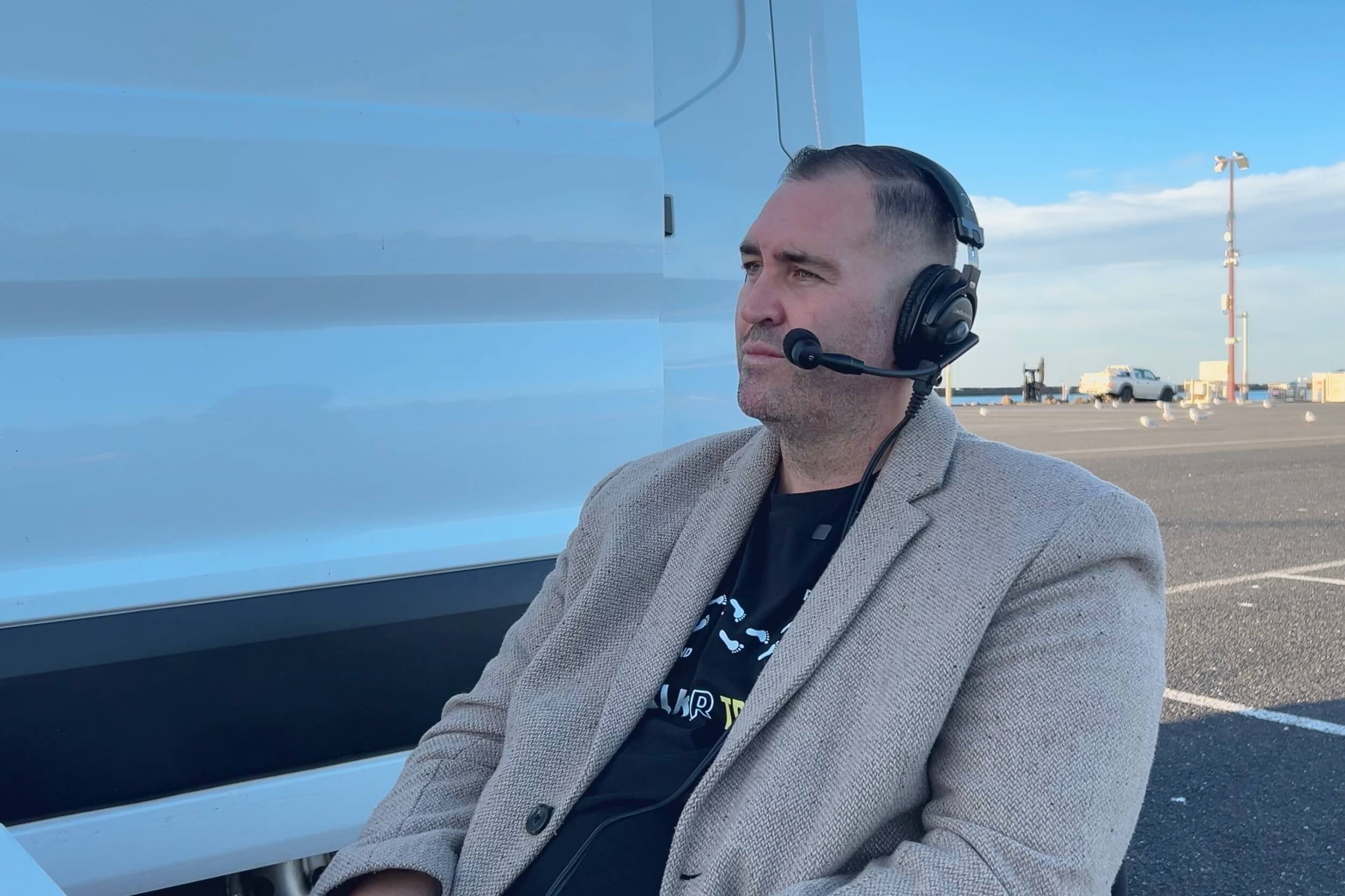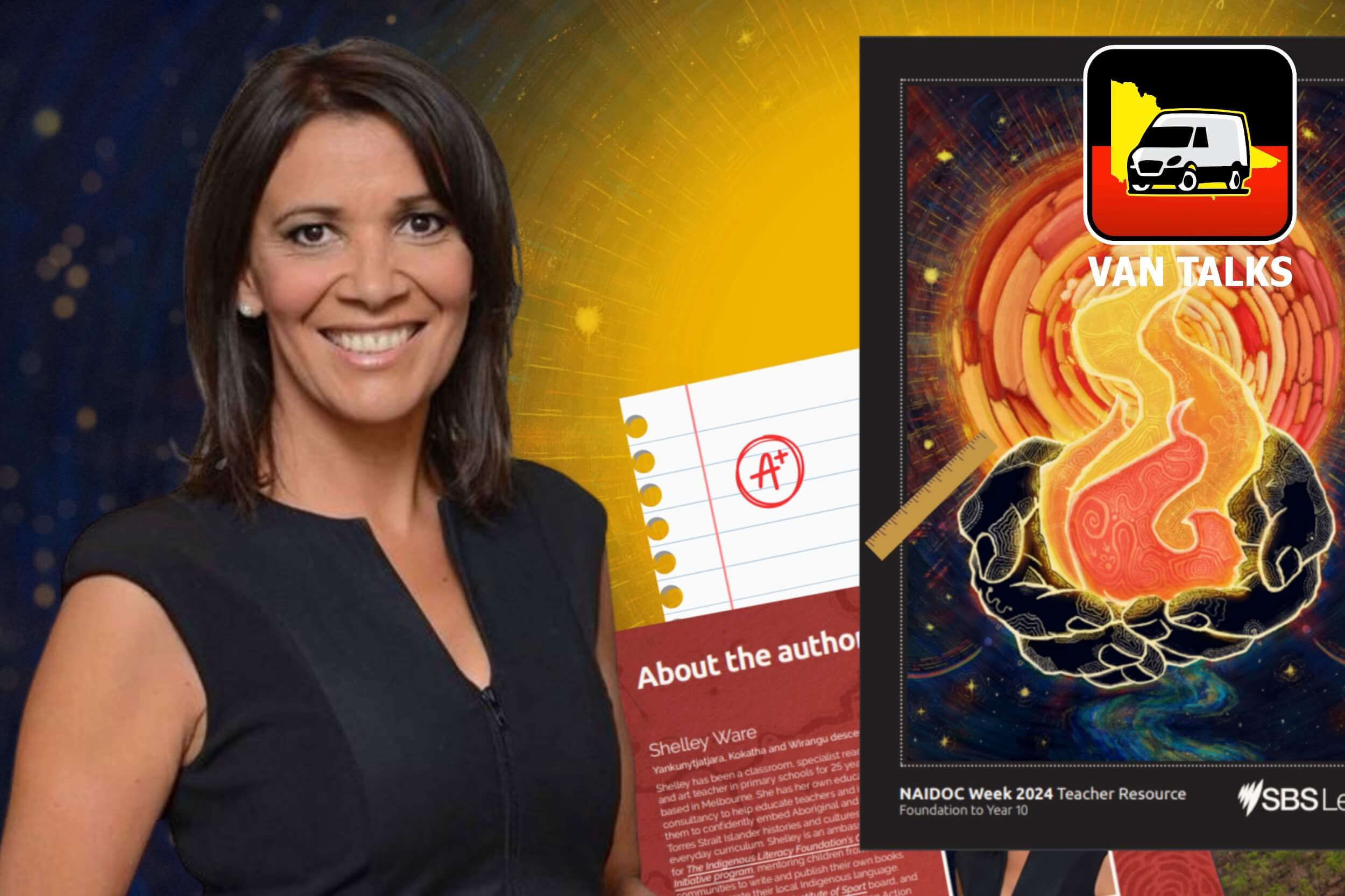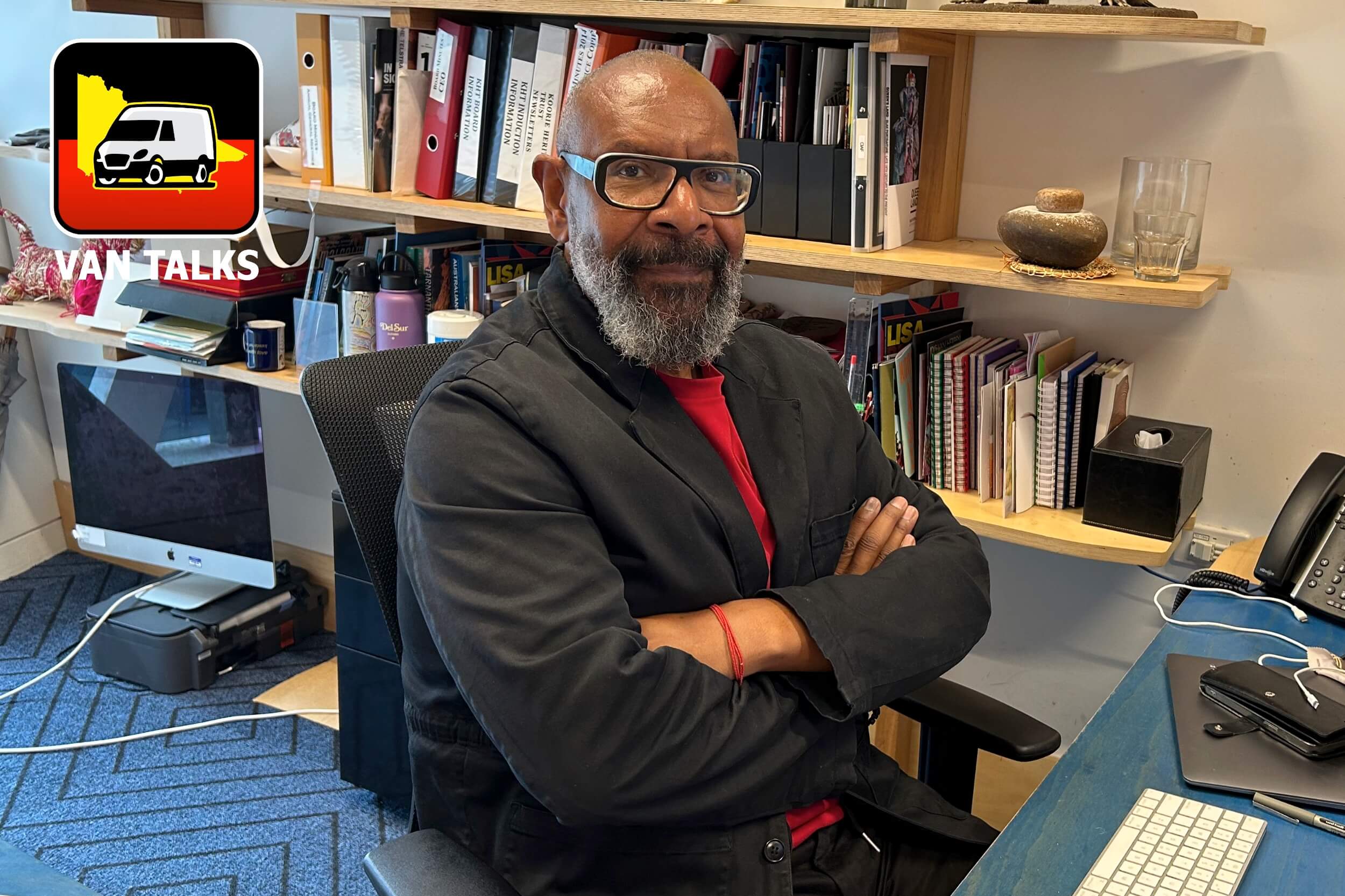Charles Pakana (VAN):
Joining me today on the program is the CEO of the Self-Determination Fund, Dr. Rohan Henry. A Gunditjmara man who’s been at the helm of the Self-Determination Fund since December 2024.
Rohan, give us a bit of an understanding of what the Self-Determination Fund’s purpose in life really is in the treaty ecosystem.
Dr. Rohan Henry (CEO, Self-Determination Fund):
The Self-Determination Fund’s here to support and assist groups. Enable them to participate in the treaty process is fundamentally the first phase of what we do. We actually do three things and we try and do those extremely well. The first phase of what we do is what we call Equal Footing and that program is really to provide some dollars to our groups across the state to enable them to participate in treaty more broadly.
And that’s got a few phases within it. So the first phase is just understanding what treaty is about, getting their mob together to normalize a conversation around treaty, what their aspirations may be. The second, third phases are really about getting onto the database associated with the Treaty Authority, meeting the treaty negotiation framework standards. And then, down the… Four and five are about negotiating treaties down the backend.
Charles:
So when you say groups, okay? Because there’s always dissent when it comes to what constitutes a group. Is it under the RAP Program, TOSA [Traditional Owner Settlement Act], Native Title? It’s a bit more nuanced than that, isn’t it? When it comes to the treaty ecosystem.
Rohan:
It is and I think it changes as we progress down that phased approach as it aligns to the treaty negotiation framework. So in the first phase, for example, we’re just probably talking at group level more specifically. So that can be RAP or non-RAP group, whatever that group size is or whatever a group thinks their areas and populations and-
Charles:
But who determines the group?
Rohan:
That group themselves at this stage for Phase 1, so we don’t get involved with the politics around that. In terms of the granularity of what a group may be moving forward, we’re sort of governed by those requirements in the treaty negotiation framework about forming delegations. So it might start as a whole of RAP group down to a nation group, down to a family group. And that will, obviously, align to what the delegation forming process looks like down the backend.
So yes, there is some variability and a little bit of unknown in that process as we go on that journey. But at the moment, whole of group’s pretty easy. Getting onto the database. RAPs will get onto that, that’ll be quite easily. And then, obviously, non-RAP groups will have to do a little bit more work. And then, once they start to form delegations, what is a delegation? Is it at a family group? Is it at a nation group? Is it more?
Charles:
Well, according to or discussions I’ve had and documents that are out there, really, a delegation once it gets to negotiating a treaty is really any entity as long as there’s no geographical overlap with another group as well. So is that the way you are looking at it right now? You’re not even judging it really, are you?
Rohan:
No. So that is how we are looking at it. Obviously, there’s going to be some complexities once those things actually start to formally roll out. And that’ll potentially have impacts to the fund itself in its terms of its quantum of money. So when there’s overlap, “Is there multiple small groups? How do we fund that? How do we give some equity across the state as well and to all those groups to be fair? And responsible back to the fund is what the directors are here to do.
We probably should talk about that a little bit more in a minute. But the other two things that we do, if I just probably should jump in. So we do the Equal Footing program and the second thing is a wealth and prosperity objective that we have. So again, once we’ve passed treaty, how do we grow wealth and prosperity for all our mob across the state? And that probably goes well beyond the treaty process. So from that sort of point of view, we’re looking at hoping to grow the fund to a significant critical mass where that generates its own income and revenue. Is there dividends going back to community? Does that enable people to access our fund for accessing for maybe home loans or contributions to deposit for home loans-
Charles:
That’s much broader than the initial intent of the Self-Determination Fund, isn’t it?
Rohan:
It is. And businesses or whatever that may be back to community groups to build their own entities and businesses and whatever they’re made to do. So we’re looking at a strategic plan over the next six months to scope out what they may look like and then we’ll start to roll out and develop that a little bit more.
Charles:
But let’s talk about the purpose and the finances of the Self-Determination front from its inception. Now, in the early days when the Self-Determination Fund was being worked out, it was all about ensuring that traditional owners would be on an equal footing with the state government when it came to negotiating treaty.
Because you can only imagine the legal might of the state government coming up against a smaller group out there in wherever in Victoria, obviously, it would be David meeting Goliath. Now, in the Bible, definitely, David may have won. But in reality when it comes to the legal system in this state, David doesn’t often win. So that was the initial purpose of that. But what you’re alluding to here is that this is going to be a much broader situation. Let’s just bring it back though to that first stage. And that’s getting the traditional owners or the groups ready for treaty preparation. Now, first of all, let’s clarify. This is for in the hybrid model of treaty. It is for local or Traditional Owner Treaties only. It is nothing at all to do with the statewide treaty.
Rohan:
That’s correct. We’re not funding the statewide treaty process.
Charles:
The funding initially came in from the state government. I think we mentioned before in the pre-interview yarn, about $65 million-
Rohan:
Correct.
Charles:
That’s that bucket you’ve got right now, with no real sign of any money coming in. Let’s be politically realistic. If things don’t go well for the state government in the 2026 elections, you’re not looking to get a lot of money coming in from a conservative government, are you?
Rohan:
We wouldn’t expect so, but that’s obviously work on us to pursue other sources perhaps. So we’ve got that what we can do with the government, can we build on that initial 65 million? Can we work with our colleagues at the assembly to sort of maybe help us with some of those conversations into government? But then, it’s also some responsibility back on ourselves and, again, touching on the wealth and prosperity. But we also need that initial build of the Equal Footing funding program to help assist those groups and whatever size they are based on those delegations down the backend.
The 65 million will be a stretch. So there’s obviously an importance for the board and the organization itself to sort of seek more funds to grow that. At least, to meet the minimum requirements of Equal Footing in terms of a financial setting. But at the same time, obviously, for us, I think we think the biggest game is really building that wealth and prosperity for well beyond treaty. That’s where we would like to be focusing most of our time, but we’re obviously in the Equal Footing process at the moment.
Charles:
Well, let’s just look at the first two phases because there are five phases of funding that the Self-Determination Fund has established. It’s the first two that are the most important right now. The first of those is framing treaty aspirations. This is up to $200,000 per group as you made mention. And currently, there’s, I believe, nine groups that have been funded. A number that are under consideration, I’m aware of that. But less than $2 million right now.
But when it comes to Phase 2 and that is pre-treaty preparations, there’s a roof of $1.5 million. That’s going to go pretty quick and I can imagine the $65 million will be depleted incredibly quickly once these groups look to get the pre-treaty preparations underway. Where are we looking at with regard, first of all, to what you would see as a complete list of applications under Phase 1?
Rohan:
So look, with under Phase 1, obviously, yes, we have funded those nine groups as you had mentioned. We’ve had lots of discussions with other groups, non-RAP groups mainly, who have reached out to the Self-Determination Fund over the last six to nine months and made contact with them. Encouraged them to put an application. And those things are in train now. So we expect the total number of groups to be funded under Phase 1 to probably hit 25, if not 30 in the next three to six months, is the word that we’re getting from the street. We’ve obviously got some in play. There was some approved last week and we don’t announce those until the contracts are formally signed.
Charles:
Sure.
Rohan:
But we’ve got a number in play all ready to go for assessment over the next month. And the continued conversations with some of those other groups suggest that they will be with us in the next two months. So we should have a great range of funding across the state for under Phase 1. The Phase 2 one, yes, it does become an issue. So as we said earlier, I think the registered Aboriginal parties are probably likely to meet the requirements of getting on the database in terms of the Treaty Authority’s requirements reasonably easily. So is there an argument those groups may not need the 1.5? But there should be some sort of funding to allow them to participate and continue with their treaty offices and do some running around. So we’ll have some individual conversations around that.
Charles:
So just to clarify, it seems that the $1.5 million is essentially to get them to meet those minimum standards required by the Treaty Authority to get onto the Treaty Authority’s database. And just for our audience right now, in order to negotiate a local treaty under the treaty negotiation framework, both the state government and the group must meet the minimum standards. So confirming that 1.5 million is to help them meet the minimum standards.
Rohan:
Correct. That is true. And that’s where, probably, the non-RAP groups might need to do a little bit of extra work. And so, they might need a little bit more than a minimum. We’re not saying that might be 1.5. We’re trying to establish individual relationships with each of the groups that we deal with and we’re obviously encouraging from the longevity of the fund with the existing funds that we’ve got to be fair. And what do they really need to get to treaty for that Phase 2 to get onto the database? We’ve probably asked people to be a little bit more conservative. If they need to come back to us, that’s fine. But let’s start with, what’s the minimum you need to get onto the database? And obviously, to meet the minimum standards, correct. And obviously, that third phase then is about forming delegations which needs another bit of work as well. So that’s the second and the third phase.
Charles:
The second phase though and the first phase according to the Self-Determination Fund’s guidelines and website close off the 30th of September this year, 2025. Let’s be realistic on this. Can you really imagine that you are going to get all the groups registering and ready to go onto the Treaty Authority’s database by September?
Rohan:
I would say no. And just in the background, we are looking at those closure dates. That is all under review. I think, look, it’s important that we open the phases, but I’m not sure we need to close the phases. If people need to systematically go through a process, if that group’s not ready… Again, arguing for self-determination for those groups. If they’re not ready to apply or they’re not ready in a position to meet the requirements of accessing funds to get on the database, I think that date can be reviewed. So there’s some things happening in the background. Internally, they’re looking at the more strategic outcomes around what the funding guidelines look like, what the application forms look like. Starting to really make sure that that reflects the needs of the treaty negotiation framework. So we’re asking groups to provide us that information in their funding application so we can make a fair and valid assessment against the money that they’re asking for in order to meet their journeys of getting onto the minimum standard’s database.
Charles:
Now, I would assume that with… Let’s say you’re talking about 30 groups under Phase 1, that’s your aspiration and let’s say we get full expenditure of that $65 million by the time Phase 2 is finished. Let’s now talk about what happens post-initial funding depletion.
Rohan:
Good question. So lots of strategic conversation happening at board at the moment around those sort of things. What do we need to do? And again, it comes back to the underlying, what’s the capital growth strategy of the organization? Where can we maximize that income, if you like? So I think there is obviously further discussion to be had with government. Because again, we are negotiating with the government for that Equal Footing process. There’s also some arguments about can we approach other entities around the country, really?
Charles:
Well, you are a charity, aren’t you?
Rohan:
We are and we do have the full tax-deductible gift-
Charles:
Oh, DGR recipient. There you go.
Rohan:
There you go. So we’re encouraging people to sort of reach out to us and have a chat if they’ve got some dollars they’d like to put in our fund. We’d appreciate that.
Charles:
So is that a strategy that you’d be looking at where you’d be going out there as one of these serious charities to seek input from the key philanthropists?
Rohan:
Yes, we would. Philanthropists, even just normal big private companies that are willing to throw some dollars our way as well. So probably a bit more seriously than that. We’ve got to look at the way that we do that. And what does that mean? Obviously, we’ve got some ethical investment, then we sort of look who we accept things from based on their histories as well. So there’s a bit of criteria to make sure that we’re culturally appropriate in the way we accept money and who we accept that from.
Charles:
So there are some business names that come immediately to mind, which I’m not going to mention on air. But yep, okay. You’re nodding away. We assume that you’re not going to take money from them. What do you expect to be the longevity of the Self-Determination Fund? How long do you see it existing for?
Rohan:
Well, to be fair, look, I’m probably still absolutely confident and positive that we are here for 100 years and more, to be honest. My vision, and probably the vision of the board as well, is to say, “Well, look, we’ve got through the treaty process. Everyone’s up and going and they’ve got their happy outcomes,” depending on what that looks like for each group. But this is where that focus on that wealth and prosperity into the future is really where we are. Can we break that dependence on the government?
We talk about self-determination. Wouldn’t it be a great world where we’re an entity that provides a dividend back or we provide some funds back to groups or however those things are determined down the backend? That people can just do their own thing. They don’t have to check in and report on the money. They’ve got some income. They can go and do a business. They can put it back to their community, they can do cultural work/ they can do whatever they like with no accountability whatsoever.
So we are thinking 100 more years down the track that we’ve got this critical mass that just hopefully generates a dividend back to mob over a period of time. But also, enables people to come and access money under certain programs we may have in the future as well to grow the… As I said, whether it’s housing, whether it’s businesses, whether it’s infrastructure developments, whether it’s… Whatever it may be, the window’s really wide open to what we look at-
Charles:
That’s well-
Rohan:
… and we are really looking at that sort of development of that sort of high level strategy over the next 6 to 12 months.
Charles:
So that’s well beyond the initial thoughts of treaty?
Rohan:
Correct.
Charles:
This is truly self-determination going forward.
Rohan:
Correct.
Charles:
Was that a part of the plan or the aspirational thoughts at the development of the Self-Determination Fund?
Rohan:
Look, I probably wasn’t around at the start of those three key establishments that we said, the Equal Footing, the wealth and prosperity, and the investment strategy. They were sort of through our directions to trustee, so those conversations came before my time. But I really still see that wealth and prosperity is the most critical bit of the whole ecosystem in which we operate.
So the Equal Footing, yes, that’s for the next whatever it may be, 5 to 10 years or something, or other to make sure that people have negotiated their own treaties under the state treaty as well. But then once that’s done and dusted, hopefully, those things are operating smoothly. But that real wealth and prosperity, how can we put that back to our communities? How can we just make them completely independent to go and do what they want to do, how they want to do it? Take control back of country. Spend the money where they want to spend it within their communities. Back on it as an individual level. Back at an entity level. I just think the world’s everyone’s oyster. We can just really grow it and grow it and grow it. And just let people just get on with what they need to do like everybody else.
Charles:
I love the optimism. It’s wonderful. I want to understand also, where does the Self-Determination Fund sit within all these organizations? Is it independent? Does it report to the First Peoples’ Assembly of Victoria? What’s the relationship with the Treaty Authority? Because quite frankly, it can get incredibly confusing at time. And for a lot of the audience out there, it’s simply this gray area that’s impenetrable by way of understanding. Where does it sit?
Rohan:
Well, we would like to say that the Self-Determination Fund is an independent entity and we’re probably more of a commercial entity that, obviously, is here to deliver significant cultural outcomes based on the rules of our directions to trustees. They caught me. We won’t go through the technical details of that so we’re-
Charles:
Well, yes. Thank you.
Rohan:
… here to provide those requirements around that. But where it is, the Assembly is fundamentally the shareholder, at the moment, of the fund and that’s that relationship there. But we actually feel that the most critical relationship is with the Treaty Authority at the moment. Because again, going back to that phased funding, Phase 1, Phase 2, Phase 3, particularly Phase 2, 3, and beyond, the requirements of mobs accessing that money needs to meet the requirement of the Treaty Authority’s treaty negotiation framework really.
So we have a really good working relationship with the Treaty Authority to make sure that for the asks that we are putting out to mob in their applications clearly meets the requirements of that treaty negotiation framework. So what support can we do to help people get on the database for minimum standards? Then, what do we need to do to help form that delegations? But yes, independent. But obviously, it’s like a Venn diagram. We’ve all got our own bits and pieces that we need to do, but there’s an overlap in the middle.
Charles:
But you mentioned the Assembly is a shareholder.
Rohan:
Yes.
Charles:
We’re talking a primary shareholder, a controlling shareholder? That’s a very, very open term and you glossed over it very quickly, Rohan. Come on.
Rohan:
Yes, that’s right. Well, the sole shareholder at this stage. But again, without knowing what happens once all the treaties are done and dusted, what does that entity look like there if there was no ongoing body there? And again, this is all just hypothetical, theoretical at the moment. If there was no Assembly or some ongoing entity beyond the treaty negotiations, is there some sort of distribution that just goes back to traditional owner groups within Victoria on some sort of proportionate basis? Like a body corporate, if you like. Is there some sort of dividend that could be paid out?
Now, again, that’s just skyballing at this stage, so we don’t know what that’s going to look like yet. So, yes. And obviously, we have some reporting obligations that we need to do back to the Assembly. In terms of some of the development of our key strategic items, we, obviously, have to work with the Assembly to get a final sign-off approval based on where we’re going and just as like you would with any other normal shareholder. So that relationship works really well.
Charles:
What about with the state government, though? The state government has invested 65 million, plus operational costs, of course, for the organization. What’s the relationship with the state government?
Rohan:
We’ve probably been a little bit removed from those direct negotiations with the state government. We view-
Charles:
Is that because of the relationship with the Assembly?
Rohan:
In part and I think we work closely with the Self-Determination Committee as the Assembly to work and identify some of those issues and concerns that we may have. As an entity, how do we grow that fund? And we are putting some things in place now where, strategically, we can look at the broader ecosystem in which we work. So while the Assembly’s got some things they need to look after and it also does the Treaty Authority when we’re having conversations with government, for example, collectively we. Yeah. We want to make sure we’re not stepping on each other’s toes. But we’re also making sure those conversations don’t eliminate one of those parties in those conversations. So, of course, we’d like to have some conversations directly with government to, how do we actually broaden our 65 mil initial? But making sure that the Assembly’s getting the money that they need to do to continue the work that they’re doing and same with the Treaty Authority. So there’s a further conversation to be had around that.
Charles:
Phases 3, 4, and 5, when do you expect them to actually come about? Given that we’re still looking at, “Do we keep the 30th of September 2025 as the closing dates for Phases 1 and 2?” Do we have opening dates for Phases 3, 4, and 5?
Rohan:
We do. Well, they’re not public, I suppose. Obviously, we are seeing some… We’ve had some initial inquiries about people wanting to move into Phase 2, so that’s great. So we’re in the background now where-
Charles:
Are you prepared to name names?
Rohan:
No, of course not. It would be against-
Charles:
I have to ask.
Rohan:
… against my rules. Of course, you should… So we are moving on that track now. So obviously in the background as well, we’re starting to prepare, “What does Phase 3 look like?” We’re starting to develop that application form, refresh our guidelines to help mob approach us for those sort of money. So I think it’s actually really great. As I said, this movement in the last month or so with making sure non-RAPs are getting some cash and just the enjoyment and the excitement that the contacts I’ve had to say, “Hey look, you’ve been successful and…” It’s just amazing. It’s really uplifting to see the encouragement and the support that they’re getting access to the funds, so they can sort of roll along with what they do.
And the Phase 2 is great. When we get some people registered on the minimum standards database, it will be important as well. We’re seeing some couple of different approaches there. Some people are just sort saying, “Well, we can get on there now. We’re ready to almost go to Phase 3 straight away.” Whereas, some people just taking that little bit longer to sort of work themselves onto the database. So yeah, Phase 3 is not far away from us.
But I think going back to the dates, I think we’ll have some conversations internally now that we’ve… Obviously, a lot of these processes were developed 12, 18 months ago.
Charles:
Yeah. Because I’ve-
Rohan:
We’ve had a year to see how those rolled out. We’ve worked out what works, what doesn’t, what can be tweaked. And we’re in the process of doing that now as a board to strategically look at some of those things. I think the open date, the closing date probably could stay open for a while. People need what they need to do to get to where they need to get to, so we don’t want to be too hell-bent on that. I think Phase 3, early indications is the movement towards Phase 2. Might see some people getting to the database by the middle of the year, perhaps, is what I’m hearing. So therefore, by default, we need to be ready to go for Phase 3, say, by May or June. But that’s what I’m thinking at this stage-
Charles:
Well, that bodes well for Traditional Owner Treaties across the state actually starting to happen and that’s something that I know a lot of people have been waiting to see. Dr. Rohan Henry, thanks so much indeed for your time.
Rohan:
Thank you.








0 Comments